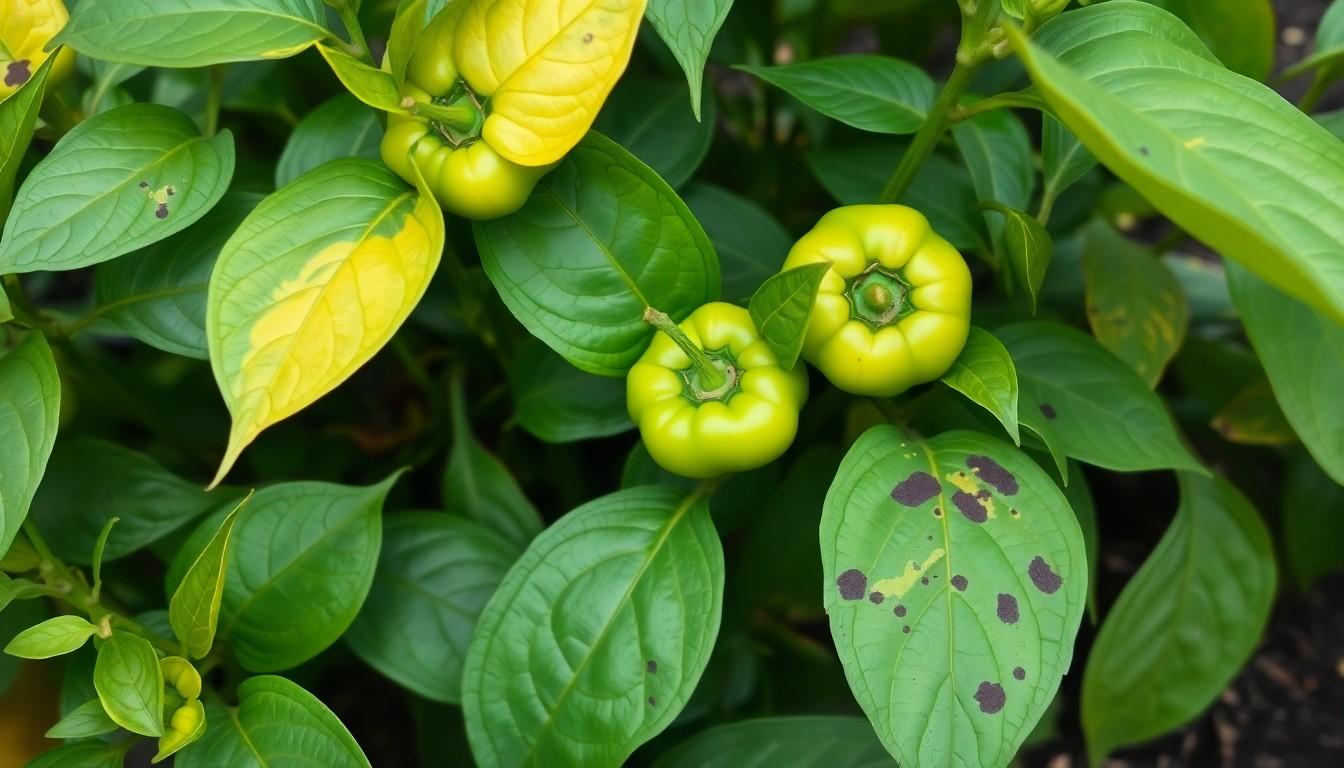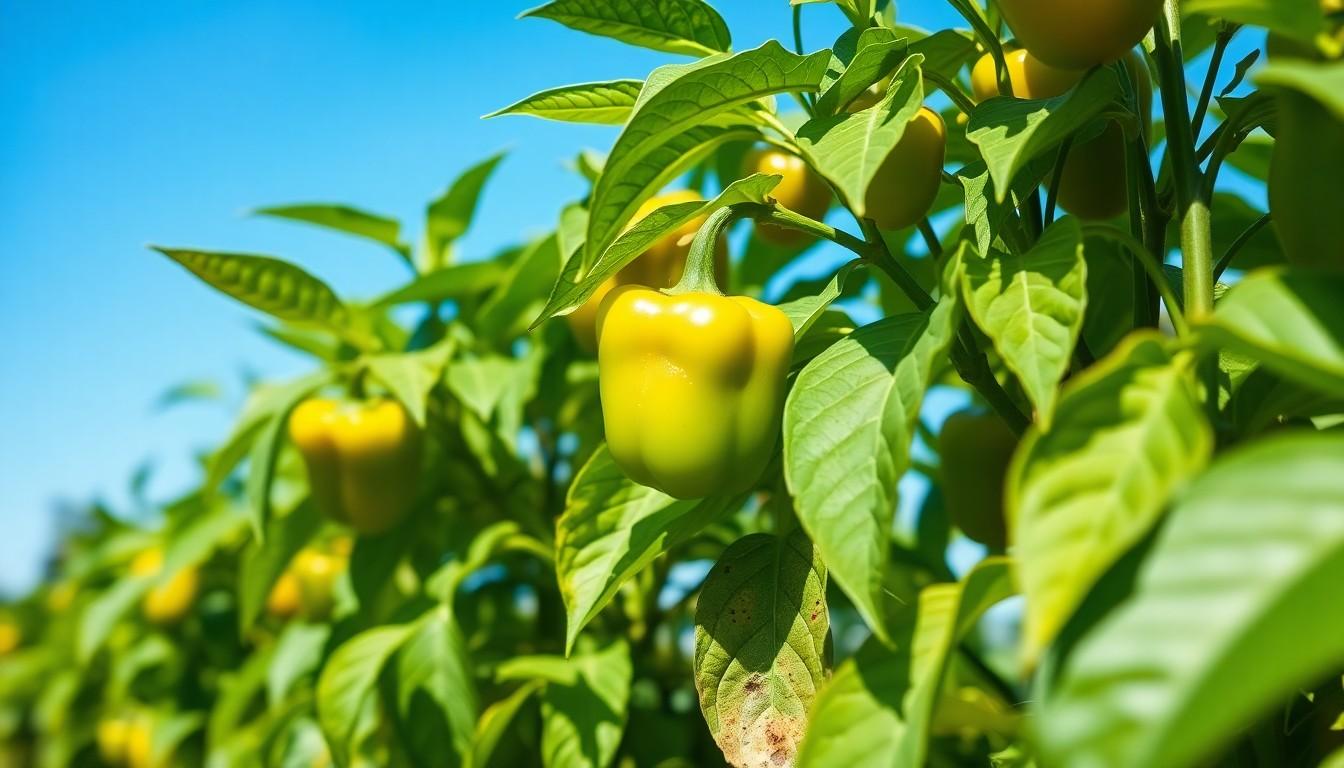Growing pepper plants can feel like a culinary adventure, but what happens when those vibrant greens start looking a little less than perky? Just like a detective in a mystery novel, identifying pepper plant diseases is crucial for keeping those spicy beauties thriving. With a keen eye and a dash of knowledge, anyone can become a plant health sleuth.
From wilting leaves to mysterious spots, pepper plants can face a variety of ailments that threaten their growth. Understanding these diseases not only saves plants but also protects the precious harvest. So grab your magnifying glass and get ready to uncover the secrets lurking in your garden. With the right tips and tricks, diagnosing and treating these pesky problems can be as easy as pie—or should we say, as easy as pepper?
Overview Of Pepper Plant Diseases
Pepper plants face various diseases that can significantly impact growth and yield. Fungal infections like Powdery Mildew manifest as a white, powdery coating on leaves. These symptoms often indicate high humidity and insufficient air circulation.
Bacterial infections also pose a threat, with Bacterial Wilt causing wilting and yellowing of leaves. Observing black streaks in the stems often suggests this infection.
Viruses, including Pepper Mottle Virus and Tobacco Mosaic Virus, result in mottling and distortion of leaves. Infected plants may show stunted growth, impacting overall productivity.
Root Rot commonly arises from overwatering and poorly drained soils. Signs include wilting and yellowing, alongside soft and darkened roots.
Blossom End Rot appears as dark, sunken spots on the fruit’s tip due to calcium deficiency and inconsistent moisture. Correcting soil pH and maintaining adequate watering can alleviate this problem.
Nutrient Deficiencies manifest through yellowing leaves or poor fruit development. Recognizing specific symptoms can lead to timely adjustments in fertilization practices.
In addition, environmental factors like temperature changes and water availability influence disease susceptibility. Awareness of local climate can aid in preventative measures.
Identifying these diseases early enhances management strategies. Monitoring plant health regularly helps gardeners intervene promptly, thus ensuring the vitality of their pepper plants.
Common Symptoms In Pepper Plants

Identifying symptoms in pepper plants is vital for diagnosing diseases. Noticing changes early can lead to effective management strategies.
Leaf Discoloration
Discoloration in leaves often indicates nutrient deficiencies or disease. Yellowing leaves might suggest a nitrogen shortfall, while dark spots could signal fungal infections. A mottled appearance can arise from viral infections, impacting plant vitality. Observing the leaf margins is essential, as browning edges may point to water stress or irregular irrigation. Each symptom serves as a signal for further investigation.
Wilting and Stunted Growth
Wilting commonly occurs under conditions such as root rot or vascular disease. Stunted growth can result from viral pathogens or insufficient nutrients. Gas exchange issues lead to drooping plants, which might indicate waterlogged soil. Identifying these growth patterns aids in early disease detection. Certain factors like temperature fluctuations also impact overall plant health and growth rate.
Fruit Rot
Fruit rot manifests as dark, sunken lesions on pepper fruits. Affected fruits often develop rapidly in overly humid conditions. Conditions conducive to bacterial or fungal growth exacerbate this issue. Blossom End Rot often appears on the fruit tips, linked to inconsistent watering or calcium deficiency. Close monitoring of fruit quality helps prevent significant losses during harvest.
Major Diseases Affecting Pepper Plants
Identifying diseases affecting pepper plants is crucial for maintaining their health and yield. Understanding the types of diseases can aid gardeners in effectively managing their crops.
Fungal Diseases
Powdery Mildew ranks among the most common fungal diseases. It manifests as a white, powdery coating on leaves. This condition thrives in conditions of high humidity with poor air circulation. Another fungal issue, Phytophthora Blight, leads to water-soaked lesions on stems and fruits. It frequently occurs during wet weather. Furthermore, early blight causes dark spots and yellowing leaves, especially in older foliage. Preventive measures like proper spacing and airflow can mitigate these fungal threats.
Bacterial Diseases
Bacterial Wilt presents as wilting and yellowing of leaves. Black streaks may appear on infected stems. This disease often spreads through contaminated water or soil. Another concerning bacterial issue is bacterial spot, which causes dark lesions on leaves and fruit. This disease can significantly reduce yield. Proper sanitation and resistant plant varieties serve as effective control methods against bacterial infections.
Viral Diseases
Viral infections such as Pepper Mottle Virus lead to mottling and distortion of leaves. These symptoms result in stunted plant growth and reduced yield. Tobacco Mosaic Virus, another viral threat, can cause leaf curling and discoloration. Transmission occurs through contact with infected plants or tools. Implementing practices like crop rotation and using certified seeds can help prevent viral outbreaks in pepper plants.
Identification Techniques
Identifying diseases in pepper plants plays a critical role in maintaining their health. Several techniques help diagnose these issues accurately.
Visual Inspection
Visual inspection serves as the first line of defense against pepper plant diseases. Gardeners should look for changes in color, texture, and shape. Yellowing leaves often indicate nitrogen deficiency or disease, while dark spots signal fungal infections. Wilting plants may suggest root rot or bacterial wilts. Early fruit rot presents as dark, sunken lesions, particularly in high humidity. Observing these signs allows for timely interventions.
Laboratory Testing
Laboratory testing provides a thorough analysis of suspected diseases. Samples collected from plants undergo microscopic examination and culture tests. These tests detect pathogens like bacteria, fungi, and viruses. Results help accurately identify the specific disease affecting the plant. Reliable laboratory insights enhance the management strategies employed by gardeners, resulting in a more informed approach to treatment.
Field Monitoring
Field monitoring involves regular checks of pepper plants for symptoms of disease. Frequent assessments help detect subtle changes before they escalate. Factors such as moisture levels, temperature, and pest presence all influence plant health. Tracking these conditions reveals potential disease outbreaks. Implementing a systematic monitoring schedule empowers gardeners to act quickly, ensuring the vitality of their pepper crops.
Prevention And Management Strategies
Effective disease management in pepper plants relies on a combination of strategies that address various factors. Gardeners can significantly reduce the risk of disease through cultural practices, chemical treatments, and integrated pest management.
Cultural Practices
Cultural practices form the foundation of disease prevention in pepper plant cultivation. Proper spacing between plants promotes air circulation, which helps reduce humidity and fungal growth. Regular sanitation, including the removal of infected plant debris, minimizes the spread of pathogens. Crop rotation lowers disease incidence by depriving pathogens of their host over successive seasons. Selecting resistant pepper plant varieties adds an extra layer of defense against specific diseases. These practices collectively enhance plant health and resilience.
Chemical Treatments
Chemical treatments play a vital role in managing identified diseases in pepper plants. Fungicides effectively combat fungal infections, particularly during high-risk periods of increased humidity. Systemic insecticides target pests that may carry viral infections, reducing the likelihood of transmission. Bactericides help control bacterial infections when used as a preventative measure. Applied correctly, these treatments protect plant health and improve overall yields. Always follow label instructions to ensure safe and effective application.
Integrated Pest Management
Integrated pest management (IPM) combines multiple strategies for sustainable pest and disease control in pepper plants. Monitoring plant health regularly aids in early detection of diseases and pest issues, allowing for timely interventions. Implementing biological controls, such as beneficial insects, provides natural pest suppression without harming the environment. Cultural practices support healthy crops, while chemical controls are selectively used only when necessary. IPM ensures a holistic approach that promotes long-term plant vitality and reduces reliance on chemical treatments.
Conclusion
Identifying diseases in pepper plants is crucial for maintaining their health and maximizing yield. By staying vigilant and informed gardeners can tackle issues before they escalate. Regular monitoring and early detection empower them to implement effective management strategies.
Utilizing techniques like visual inspections and laboratory testing enhances their ability to diagnose problems accurately. Embracing preventive measures and resistant varieties further fortifies their crops against potential threats.
With the right knowledge and tools at their disposal gardeners can ensure their pepper plants thrive, leading to bountiful harvests and vibrant gardens.
